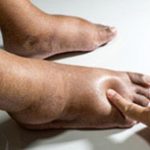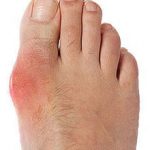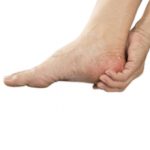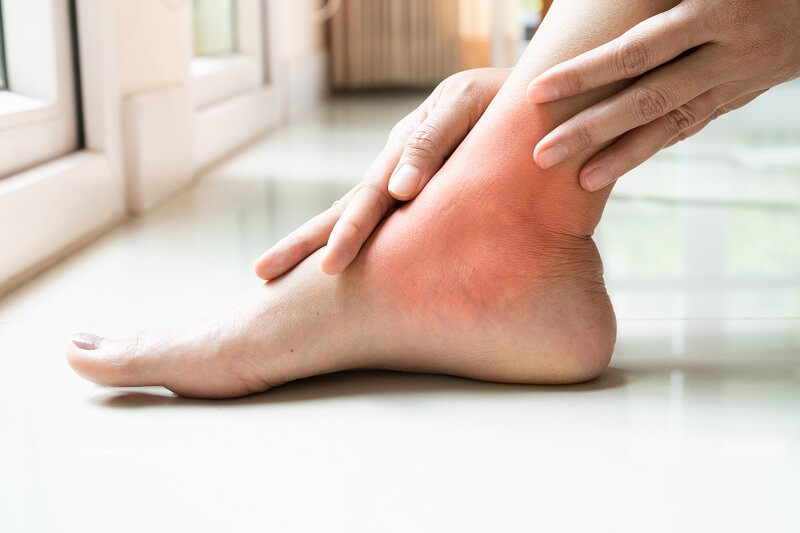Most advanced painless treatment for Diabetic Foot Ulcers
Get the most advanced painless treatment for Diabetic Foot Ulcers. The modern treatment is safe and offers quick results.
Book Free Appointments With Our Expert Doctors
- Get free consultation for 50+ diseases
- In-person and online consultation with experienced doctors
- Extensive medical assistance throughout your treatment

According to the NABH Norms
No Cuts, No Wounds, Painless*
Insurance Paperwork Support
Web-View
Technology
What is a diabetic foot ulcer?
A diabetic foot ulcer is an open wound or sore that occurs as a result of poorly controlled diabetes. Diabetic foot ulcers are quite common, and 1 in every 10 people with diabetes end up having foot ulcers. Even mundane things like a new pair of shoes or minor injuries to the foot can lead to the development of foot ulcers.
In diabetic people, due to high or fluctuating levels of blood sugar, the process of healing of the exposed skin tissues is slowed down. This happens because of improper nerve functioning or narrowed arteries and thus, the injuries or blisters do not heal and a foot ulcer develops. Diabetic foot ulcers cause a lot of pain and discomfort, and if left untreated can lead to infections and ulcer-related complications.
Book Your Appointment
Overview of diabetic foot ulcer
→ Anemia
→ Fecal Incontinence
→ Blood Clots
→ Infection of tissues
→ Strangulation/gangrene (In severe cases)
→ Abscess formation (In severe cases)
→ Tissue death (In severe cases)
→ 30% off on diagnostic tests
→ Confidential consultation
→ Single deluxe room
→ Free follow-ups post-surgery
→ 100% insurance claim
→ All Insurances covered
→ No upfront payment
→ No running behind insurance authorities
→ Paperwork by Surgicare team on your behalf
Causes of diabetic foot ulcer

Poor Circulation

High Blood Sugar (hyperglycemia)

Nerve damage

Hypertension

Venous insufficiency
Symptoms of diabetic foot ulcer

Swelling, discoloration, and warmth around the wound.

Foul-smelling discharge seeping from the wound

Pain and firmness when the wound is touched

Callused or thickened skin surrounding the ulcer

Fever and chills in advanced stages of foot ulcers
Treatment of diabetic foot ulcer

Diagnosis
To diagnose the seriousness of the diabetic foot ulcer, your doctor may conduct a series of examinations. The doctor may want to know about your medical history and will conduct a physical examination to look for scratches, cuts and blisters. The doctor may feel your pulse to evaluate the blood flow to your feet. In addition to the physical exam, your doctor may also recommend X-rays to look for any misalignments in the feet due to decreased bone mass. MRI scans may also be conducted to get an idea about the extent of damage caused by the ulcer and if signs of any infection are seen, blood tests may be recommended.
Treatment
Debridement
Debridement is a procedure to treat wounds in the skin. In this procedure, a sharp tool or a scalpel is used to remove the dead tissue or infected skin tissues from the ulcerated foot. After the procedure, the wound is covered with a sterile bandage and the bandage is replaced daily. Ointments can also be used to hasten the healing process.
Infection Control
Foot ulcers are prone to infections. For infection prevention and control, your doctor may prescribe antibiotics like cephalexin, amoxicillin, moxifloxacin or clindamycin. These work against bacteria like staphylococcus aureus, β-hemolytic streptococci, Enterobacteriaceae, etc which are likely to cause infections in the ulcers.
Vascular Surgeries
Since one of the major causes of diabetic foot ulcers is narrowing of arteries and poor blood circulation, surgery may be required to increase the flow of blood.
Atherectomy is the surgical procedure used for the treatment of diabetic foot ulcers caused due to peripheral artery disease. In this procedure, plaque consisting of fat, cholesterol and calcium is removed from the artery, thereby making the artery wider. Wider arteries have better blood circulation. The plaque is removed by shaving or vaporizing using small rotating blades at the end of a catheter or by using laser energy.
The procedure is performed under the influence of general or regional anesthesia, depending upon your medical history. Sometimes, after atherectomy, balloon angioplasty may be performed. In Balloon Angioplasty, a stent is inserted into the blood vessel to keep it open.
If you have advanced blockage in the artery, gangrene, or open sores in the foot, your doctor may perform leg bypass instead of balloon angioplasty. Leg bypass allows the creation of a new route so that the blood can travel around the blocked artery and proper blood flow to the foot can be maintained.
Why Surgicare ?
Surgicare is COVID-19 safe
our safety is taken care of by thermal screening, social distancing, sanitized clinics and hospital rooms, sterilized surgical equipment and mandatory PPE kits during surgery.
Post Surgery Care
We offer free follow-up consultations and instructions including dietary tips as well as exercises to every patient to ensure they have a smooth recovery to their daily routines.
Medical Expertise With Technology
Our surgeons spend a lot of time with you to diagnose your condition. You are assisted in all pre-surgery medical diagnostics. Our procedures are according to the norms of NABH.
Assisted Surgery Experience
A dedicated Medical Coordinator assists you throughout the surgery journey from insurance paperwork, to free commute from home to hospital & back and admission-discharge process at the hospital.
Frequently Asked Questions
Are diabetic foot ulcers curable?
Can I soak my diabetic foot wound?
What happens if a diabetic foot wound is left untreated?
Is there anything I can do to prevent diabetic foot ulcers?
How are diabetic foot ulcers treated?
Can diabetic foot ulcers be dangerous?
What is the black tissue around my foot wound?
What is debridement?
What are the different stages of a diabetic foot ulcer?
Stage 0: Skin remains intact Stage 1: Development of a minor or superficial ulcer Stage 2: Deep ulcer reaching up to the bone or joint Stage 3: Formation of an abscess in the ulcer Stage 4: Death of tissues in the forefoot Stage 5: Gangrene spreading to the complete footRead More
Is diabetic foot ulcer life-threatening?
No, a diabetic foot ulcer alone is not life-threatening. But, if the ulcer is left untreated for a long time, it can cause serious health complications including:- Infection – If the ulcer is left untreated, there is a possibility of bacteria spreading to the rest of the body parts. If the ulcer remains unattended, there’s a risk of the ulcer getting infected. When the ulcer turns into an infection, the bacteria may get into the bloodstream and cause sepsis, which is a life-threatening condition. In rare conditions, the bacteria bay even cause infection in the bones.
- Ischemia – A peripheral artery disease can hinder blood flow and lead to the death of the tissue. If the condition of tissue death (gangrene) is left untreated, it can lead to irreversible conditions including death.
How can you prevent diabetic foot ulcers?
According to a review published in the New England Journal of Medicine, more than half of the cases of diabetic foot ulcers become infected. And hence, taking good care of the condition is crucial for overall health. To prevent diabetic foot ulcer or any other infection on your foot,- Keep your feet clean and moisturised
- Check your blood sugar level
- Do not wear the same socks every day
- Wear comfortable shoes
What are the risk factors of diabtic foot ulcer?
If you have diabetes, you are at risk of developing a diabetic foot ulcer. Other than this, the following factors may increase your risk of developing diabetic foot ulcer:- alcohol abuse
- heart disease
- obesity
- poor feet hygiene
- wearing poorly fit or poor quality shoes
- kidney disease
- tobacco consumption
What is the surgical treatment for diabetic foot ulcer?
The most widely performed vascular surgery for the purpose is atherectomy followed by balloon angioplasty. Atherectomy is a surgical procedure that is performed to make the arteries wider. Widening of the arteries facilitates the proper supply of blood, oxygen and nutrients to the wound so that optimal healing can be achieved. In Atherectomy, the doctor uses laser energy or a rotating blade to remove the plaque, calcium and fat layers from the artery. This makes the artery wider and improves blood circulation. Many a time, Atherectomy is followed by another procedure called balloon angioplasty. In Balloon Angioplasty, the doctor inserts a stent in the artery to hold it open. This ensures continuous and proper flow of blood through the artery.What are the best home remedies for diabetic foot ulcers?
- Flaxseed oil – Flaxseeds are enriched with omega-3 fatty acids. Omega-3 fats contain healthy fats that majorly help in repairing blood vessels. Flaxseed oil also keeps arteries flexible and functional. Keeping the vascular system is very necessary for the fast healing of foot ulcers. Therefore, flaxseeds are an amazing remedy to get relief from diabetic foot ulcers.
- Psyllium – Psyllium maintains the insulin and sugar levels in the body. This is a highly recommended herb for patients of diabetes, especially those who suffer from diabetic foot ulcers.
- Aloe Vera – Aloe vera is rich in anti-inflammatory and anti-oxidant properties. These properties make aloe vera a strong remedy for diabetic foot ulcers. You can apply aloe vera gel on diabetic foot ulcer to get fast soothing results. You can also have a glass of aloe vera juice every day to boost your immunity and promote the healing of the foot ulcer.
- Honey – Honey is certainly a very popular remedy for the condition of diabetic foot ulcers. It has antibacterial, antiviral, anti-inflammatory, and antioxidant properties. These properties of honey readily help in protecting the wound against any infection.
- Coffee – Coffee stimulates the central nervous system and boosts blood circulation. Thus, coffee acts as a remedy in improving the blood flow and the immune response in the condition of diabetic foot.
- American Ginseng – Ginseng helps in improving diabetic foot infection. It also prevents the infection from attacking the body. So, ginseng supplements are very effective in curing diabetic foot ulcers.
Know More About Surgicare ?
All humans deserve equal treatment but everyone cannot afford costly treatments at multispeciality or super-specialty hospitals.
In India, many people don’t even have mediclaim to deal with medical emergencies. Also, there is a lack of experienced professionals to consult for a second opinion in case of surgery. Surgicare & ICU is built keeping in view the above points. It offers surgery and post-surgery critical care.
Surgicare & ICU Hospital is well equipped for all kinds of surgeries and offers one of the best ICU teams of Vadodara to take care of critical patients. It offers help to all those patients who do not have mediclaim but need treatments. Surgicare & ICU offers the opportunity for second opinions.
